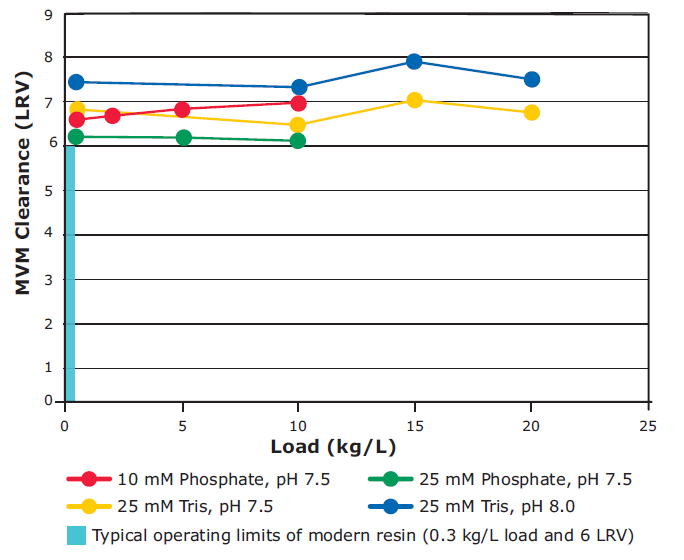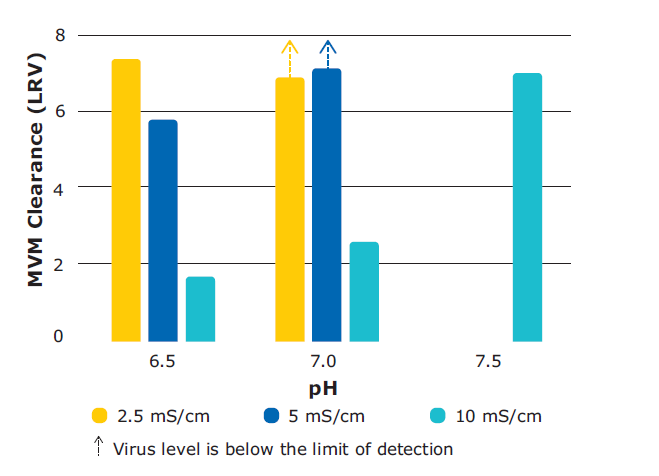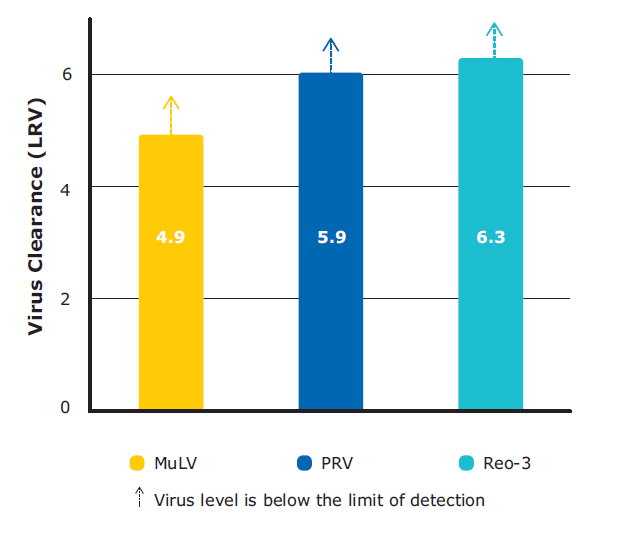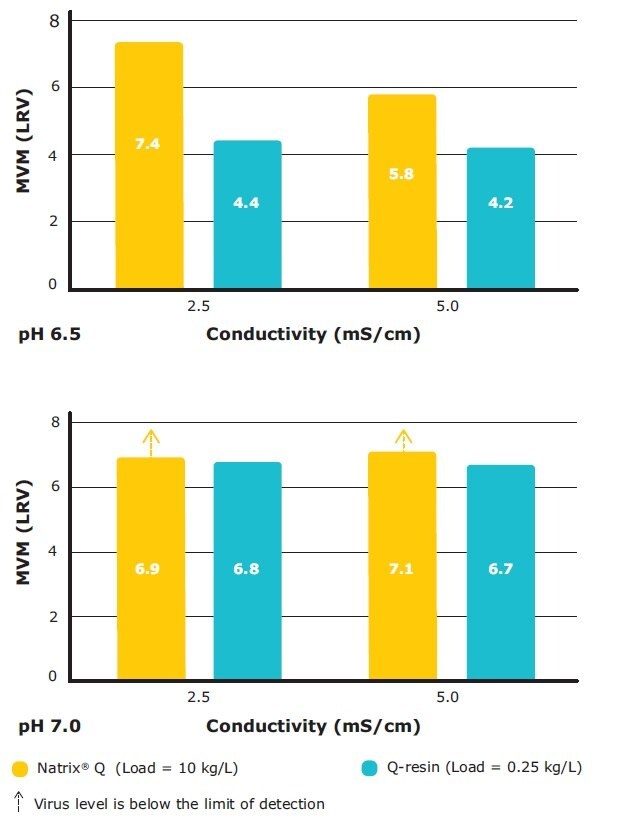Robust, load independent viral clearance in monoclonal antibody purification with Natrix® Q chromatography membrane
Introduction
Anion exchange chromatography is an important flowthrough polishing step for viral clearance of monoclonal antibodies (mAbs). Resin based materials are most commonly used for this but the large size of virus particles limits diffusion and binding capacity. It is therefore necessary to use large volumes of resin and oversized column hardware. Cost efficiency of over-sized resin columns can only be achieved through amortization, which also means high operational costs, including cleaning and storage in between batches, and associated validation, quality testing and documentation requirement. This is a particular issue for clinical manufacturing, where a column is used for only a fraction of its useful life so cost efficiency of the investment is compromised.
The high functional group density and open structure of the Natrix® Q chromatography membrane overcome these limitations in virus clearance to enable a right-sized, single-use per batch solution with improved cost efficiency. In this study, its performance in the removal of 4 model viruses is measured across a range of pH, conductivity, and buffer systems.
Materials and Methods
A biosimilar antibody with a pI of 8.4 expressed in Chinese hamster ovary (CHO) cells was used. It was captured from clarified cell culture supernatant using Protein A resin. After a low pH virus inactivation step, the sample was processed using cation exchange resin and then diafiltered into the appropriate buffer. The virus spike ratio for all the experiments was 1% (v/v). Natrix® Q Recon Mini devices with an effective membrane volume of 0.2 mL were used as a scale-down model for the entire virus clearance study. All Natrix® Q experiments were run at 10 MV/min, corresponding to 6 second residence time. The column chromatography was done using a pre-packed anion‑exchange column using high flow agarose resin with 10 cm bed height. All column work was done using 3 minutes of residence time as recommended by the supplier and a load of 0.25 kg mAb/L resin.
Robust, load independent MVM clearance under different buffer conditions
The Natrix® Q chromatography membrane shows load independent Minute Virus of Mice (MVM) clearance in both Tris and phosphate buffer (pH 7.5 and 8.0 with ≥ 6 LRV) with mAb loads ranging from 0.25 to 20 kg/L of membrane at 6 second residence time (see figure 1). The typical load for a modern resin is 0.1-0.4 kg/L of resin with residence times of 3-5 minutes.
Tris is the preferred buffer for anion exchange based polishing of mAbs. Phosphate buffers are normally not recommended for this application because the buffer ions bind to the media and may severely reduce its binding capacity. As shown here the Natrix® Q is compatible with phosphate with only a modest reduction in clearance.

Figure 1.Load Independent MVM Clearance in Tris and Phosphate Buffer
Effect of pH and conductivity on MVM clearance
With lower pH, as the buffer approaches the pI of the virus, the clearance decreases. This can be mitigated by lowering the buffer conductivity. 7 LRV MVM clearance was observed (10 mM phosphate buffer, pH 7.5, 10 mS/cm) using a sample load of 10 kg/L membrane and a flow rate of 10 MV/minute (6 seconds residence time). Similar clearance was also seen at pH 6.5 and 7 when the conductivity was lowered (see Figure 2).

Figure 2.Robust MVM clearance in varying buffer pH and conductivity
Reliable clearance of other model viruses
Clearance of three other model viruses was studied. The Natrix® Q chromatography membrane achieved LRV values of ≥4.9, ≥5.9 and ≥6.3 for Murine Leukemia Virus (MuLV), Pseudorabies Virus (PRV), and Reovirus type 3 virus (Reo-3) respectively (see figure 3). No breakthrough was observed for any virus at 10 kg/L load (20 mM phosphate pH 7.5, 10 mS/cm). This further demonstrates the broadly applicable viral clearance properties of the Natrix® Q chromatography membrane.

Figure 3.Reliable clearance of several different viruses
Natrix® Q chromatography membrane vs. Modern Q-resin
The MVM clearance of Natrix® Q was compared to that of a high flow agarose Q-resin in phosphate buffer at different pH and conductivity. Natrix® Q outperformed the Q-resin under all conditions tested (see figure 4). The difference was particularly pronounced at lower pH, where the Natrix® Q achieved up to 3 LRV greater clearance.

Figure 4.Comparison of MVM clearance by Natrix® Q chromatography membrane and a modern Q-resin
Conclusions
The Natrix® Q chromatography membrane is a cost-effective and robust single-use solution for antibody polishing. The superior viral clearance capabilities of Natrix® Q were demonstrated by studying the clearance of the most difficult virus, MVM, over a wide design space. It also showed effective removal of three other viruses: xMuLV, PRV and Reo-3.
References
Data from a presentation by Horst Ruppach, Global Manager, Viral Clearance and Global Coordinator Virology, Charles River Labs, Bioprocessing Summit, August 2015
Materials/Product Table
如要继续阅读,请登录或创建帐户。
暂无帐户?